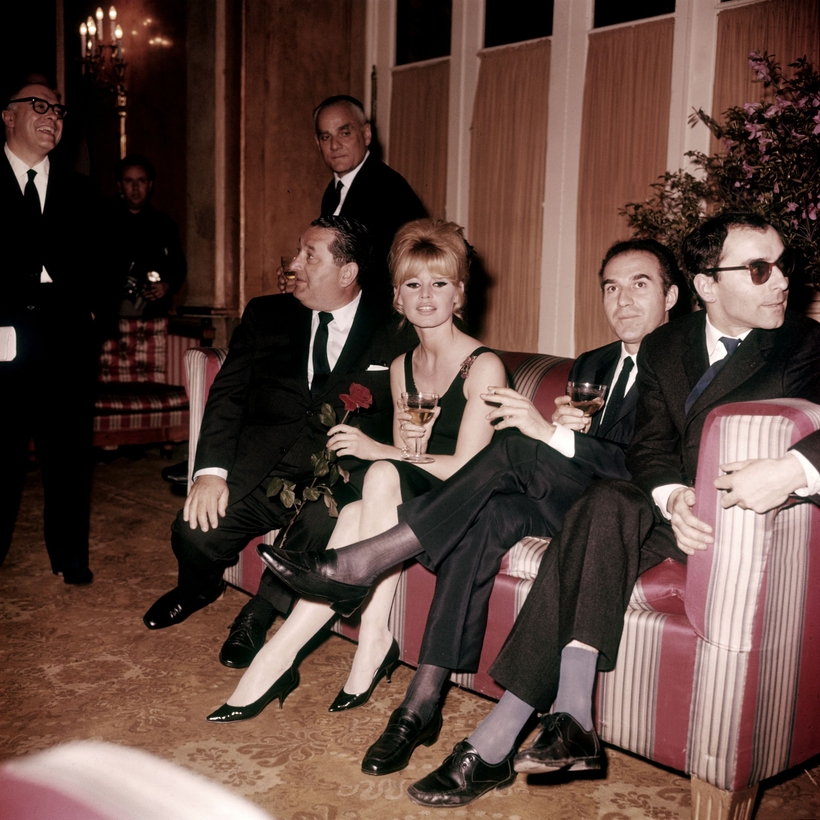Jean-Luc Godard’s classic 1963 film Contempt—his most commercially successful feature—is best known for its leading lady, Brigitte Bardot, the main event in an all-star cast that included Michel Piccoli, Jack Palance, and the legendary director Fritz Lang. It also has the pedigree of its source material: a novel by Alberto Moravia; the sun, sand, and sea of the dazzling Isle of Capri; the modernist Casa Malaparte as its indelible final location; and Godard himself, the foremost exponent of the New Wave, here deconstructing a marriage, a myth, the act of selling out, and cinema itself. As if all that weren’t enough, the lavish production of Contempt served as the springboard for a pair of short black-and-white films, both capturing the Zeitgeist of that glamorous moment.
In 2017, under the supervision of the Cinémathèque Française, these companion films by the lesser known but nimble New Wave director Jacques Rozier were restored. Godard and Rozier had become friendly in the late 1950s. Together they attended the 1959 Cannes Film Festival and a unique colloquium of New Wave directors. Rozier—auteur of the charming “Blue Jeans” and Adieu Philippine—had even been the first person to see Godard’s groundbreaking feature, Breathless. Perhaps sensing the need for a confederate in the face of his hyper-controlling Contempt producers Carlo Ponti (whom he reportedly dubbed “Mussolini”) and Joseph E. Levine (“King Kong”), or simply, as always, remaining open to improvisation, Godard accepted Rozier’s proposal to film a behind-the-scenes record of this costly production.

Rozier began by shooting the elaborate mise-en-scène, but he was quickly distracted by the freewheeling media circus—and especially by that new phenomenon, the paparazzi, who were dogging Bardot’s every move. Federico Fellini had named La Dolce Vita’s intrepid news photographer Paparazzo (Italian for “parrot”), and the term “paparazzi” had come to designate those predators with telephoto lenses who would stop at nothing to get a marketable shot of a star.
Rozier was distracted by that new phenomenon, the paparazzi, who were dogging Bardot’s every move.
In this daily sideshow, Rozier saw the seeds of his own film, a jazzy 18-minute fictional diary, “Paparazzi”—something akin to Godard’s earlier rough-and-tumble films. He turned his camera on three young Roman paparazzi who happened to be staying at his hotel. Rozier followed their days-long stakeouts in rocky terrain as they angled for a shot of Bardot in her bikini (or less). He captured their audacious incursions close to the set, which infuriated Godard, and their breakneck Vespa and taxi pursuits around the hairpin Capri roads. He caught their run-ins with hapless carabinieri and Bardot’s entourage as they aimed to get a shot of her “no matter what.” All they needed was “a pair of legs, endurance, a flash and their secret weapon: patience and stubbornness.”
Rozier then refashioned these confrontations into a cheeky narrative. He even managed to get Bardot—“the most photographed girl in the world”—to agree to be interviewed separately; she is surprisingly good-humored as she plays along. “Why this article?” she says to the camera after the paparazzi publicize a contentious face-off with her entourage outside a restaurant. “Because you’re not nice to us,” the paparazzi reply, sulking at a café table. “We risk falling to our death from a cliff!” Would they return to take pictures of her? “Of course,” they say. “We have to eat.” In an ironic finish, Bardot gives Rozier the ultimate paparazzi shot, tossing her long platinum mane for him with a saucy smile.

Eventually, Rozier returned to his initial footage and quickly realized he had more than just a “making of” documentary. This became the nine-minute-long “Le Parti des Choses: Bardot et Godard.” In addition to revealing complex technical boondoggles behind the elaborate sequences, Rozier illuminated the relationship between the “sex kitten” of traditional cinema and the “brainy filmmaker” of the New Wave. The two playfully scaled the dramatic pyramid steps of the Casa Malaparte holding hands, but their relationship was, by all accounts, simply cordial and professional, despite the added tension she brought to the production. Though Contempt was big-budget, it was in keeping with Godard’s previous homages to the “illogical, disarming, capricious, exasperating, regal, mysterious” modern woman, even if Bardot was not a muse in the vein of Jean Seberg or his estranged wife, Anna Karina. The role of Camille—a married woman who resists being used as a bargaining chip in a game of power and seduction—was, for Bardot as well, a departure.
Recently the two old friends—Godard, 89, and Rozier, 93—have again been in touch. While Godard’s work is often screened, Rozier’s distinctive oeuvre has been largely obscure to all but insiders. A retrospective of his films, to be presented by the Cinémathèque Française next year, means to change all that. Until then, Contempt, Rozier’s two short films, and other trenchant sidebars can be found on the Criterion Channel. Think of it as an alluring escape to Italy, even if we cannot, as yet, easily follow. —Patricia Zohn


 Discover
Discover